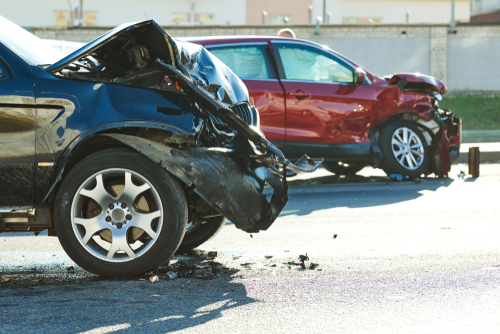When you have been injured in a traffic accident caused by another party’s negligence, Virginia law allows you to take the necessary legal steps to recover financial compensation for the losses those injuries have caused you. In most cases, the injured party will initiate the process by filing a claim against the at-fault party, which triggers their car insurance company to hire its defense attorney in the personal injury suit. If both sides cannot reach an agreement on a settlement amount, the victim’s Virginia Beach car accident attorney will file a lawsuit to seek fair compensation.
Insurance claims and lawsuits are two distinct processes. They serve different purposes and involve various procedures, timelines, and legal requirements. The following is an overview of some of these key differences.
Insurance Claims
An insurance claim is the process by which the victim seeks compensation from the at-fault party’s insurance company for their losses. The primary purpose of an insurance claim is to get financial assistance to cover the costs associated with the accident. These damages include both economic, such as medical costs and lost wages, and non-economic, such as pain and suffering, scarring, and permanent disability.
In some situations, the victim may also have to notify their own insurance company even if they were not at fault for the crash. This is usually the case if the accident involves an uninsured/underinsured driver or a hit-and-run, as Virginia law may require that one or more insurance companies must contribute their uninsured/underinsured car insurance.
It is always recommended that a car accident victim never communicate directly with the at-fault driver’s insurance company since the company’s goal will be to pay out as little as possible or deny the claim entirely by blaming the victim for the crash or by arguing that the victim is not as hurt as claimed. Always speak to a car accident attorney before speaking to the insurance company.
Insurance claims involve negotiations between the victim’s attorney and the insurance company. The attorney presents evidence of the victim’s losses, and the insurance company assesses the damages and offers – or should offer – a settlement that covers all of these losses.
If both parties agree on the compensation amount, a binding settlement is reached. This means that the victim receives the agreed-upon amount in exchange for releasing the insurance company and the responsible party from further liability related to the incident. Standard insurance practice is to pay any damages one time only, insurers do not agree to review a claim again “later” and never agree to re-assess a victim’s damages again in a year or at any later time.
Lawsuits
If a claim is denied or the settlement offer is unsatisfactory, the victim may still be able to pursue legal action through a lawsuit filed in court within the applicable statute of limitations.
A lawsuit is a legal process initiated by one party (the plaintiff) against another party (the defendant) to seek compensation for damages or injuries. Unlike an insurance claim, a lawsuit is a formal legal action taken to hold the responsible party accountable and may involve seeking damages beyond what is covered by the at-fault party’s insurance, although it is fairly uncommon to pursue monies beyond the applicable insurance coverage(s).
Lawsuits are filed in a court of law and follow a legal process. They involve the appointment of a judge, legal representation, and adherence to court rules and procedures. They may also include seating a jury who will decide on potential liability and damages, if either party requests trial by jury.
The litigation process can span months or even years, depending on the complexity of the case, court backlog, and other factors.
To prepare their cases, both parties engage in the process of discovery, which includes exchanging information and evidence related to the case. This may involve oral depositions, document requests, and other processes to either build or defend the case.
If a lawsuit is not settled through negotiations or alternative dispute resolution methods, it may proceed to trial. At trial, both parties present their case before a judge or jury, who then determines liability and the amount of damages to be awarded, if any.
After a trial, either party can appeal the court’s decision if they believe errors or injustices occurred during the trial. The appeals process can further extend the timeline of the legal proceedings.
The court issues the final judgment, specifying the verdict and the amount of compensation awarded to the victim, if applicable. The at-fault party is legally obligated to comply with the judgment order arising from the jury determination.
Contact Our Personal Injury Law Firm for Legal Assistance
If you have been injured in a car accident, contact Shapiro, Washburn & Sharp to schedule a free case evaluation with one of our skilled Virginia Beach car accident lawyers, as our law firm has been handling personal injury matters since 1985. The firm has earned over $100 million in verdicts and settlements for our personal injury clients. Our personal injury attorneys have successfully obtained financial compensation for many clients, like the $235,000 car accident insurance settlement for one client who suffered multiple injuries when another motorist negligently failed to yield the right of way.
Our firm also has satellite offices in Hampton, Norfolk, and Portsmouth.
